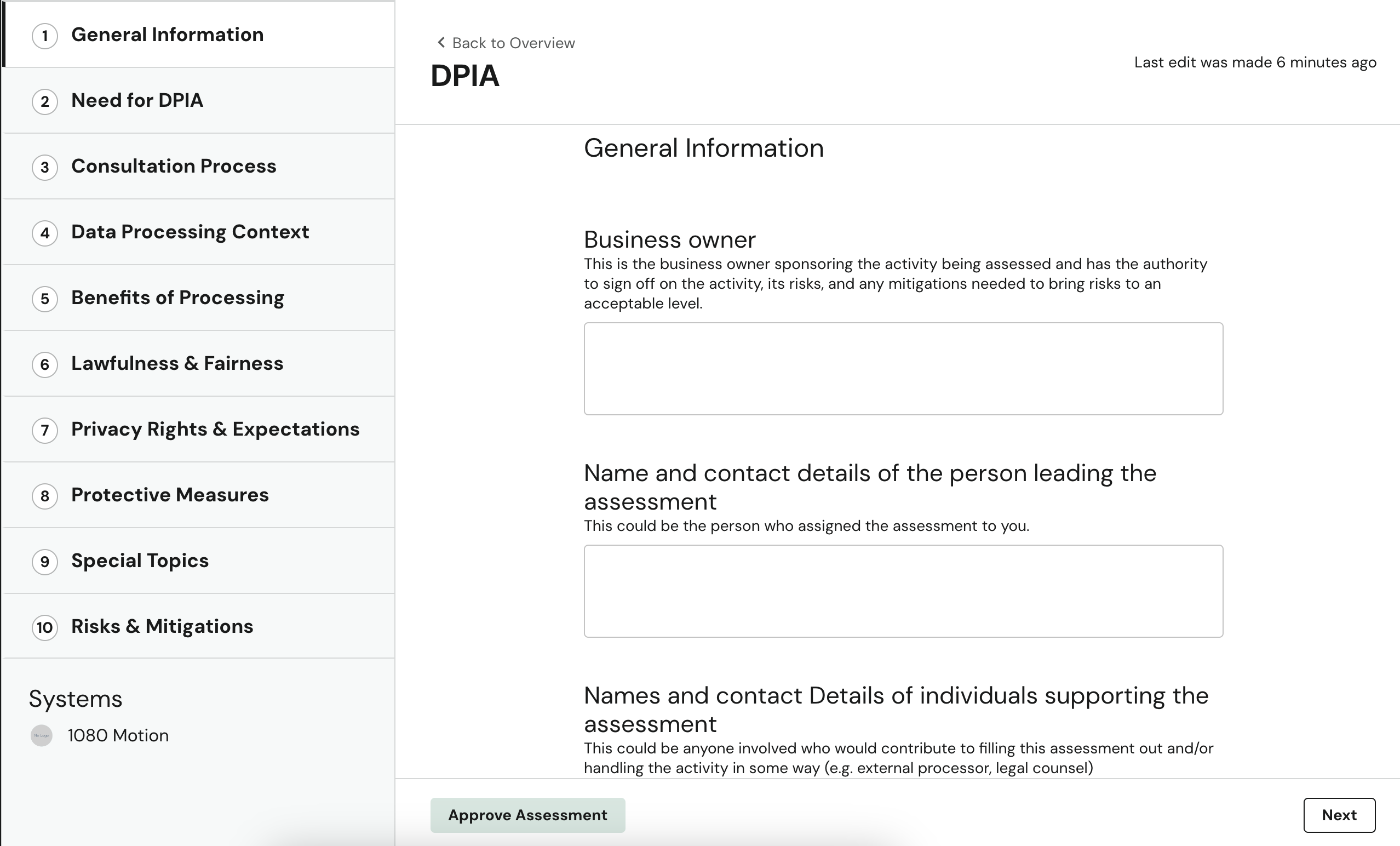Overview
DataGrail's Risk Management capabilities help you proactively identify, assess, track, and mitigate privacy risks across your organization.

Risk Assessments
Risk Assessments enable your team to proactively evaluate privacy risks before implementing new systems, processes, or technologies. This feature helps you:
- Conduct Data Protection Impact Assessments (DPIAs) as required by GDPR
- Complete Privacy Impact Assessments (PIAs) for CPRA and other frameworks
- Leverage DataGrail's Intelligence Library to auto-populate assessment questions
- Assess AI privacy risks across teams
- Use standardized templates created by privacy experts

When to use: Before implementing new systems, modifying existing data processing activities, or when required by regulations like GDPR Article 35.
Risk Register
Risk Register allows you to continuously monitor, track, and manage identified privacy risks across your entire organization. This feature helps you:
- Create and track privacy risks with standardized risk types
- Assign impact, likelihood, and mitigation status
- Develop and implement mitigation plans
- Assign ownership and due dates for accountability
- Link risks to specific systems in your inventory

When to use: To maintain ongoing visibility into all privacy risks, track mitigation progress, and ensure nothing falls through the cracks.
Example Workflow
Using Risk Assessments and Risk Register together can create a powerful workflow to streamline your organization's privacy efforts. Here's what a typical workflow might look like:
-
Assess: Your team wants to implement a new AI-powered customer service tool. You launch a DPIA using Risk Assessments to evaluate the privacy implications.
-
Flag: During the assessment, you identify concerns about automated decision-making and international data transfers. You flag these as risks.
-
Track: The flagged risks automatically populate in Risk Register with context from the assessment.
-
Mitigate: In Risk Register, you assign the risks to your DPO, select suggested mitigation plans (like implementing data transfer safeguards), and set due dates.
-
Monitor: You track mitigation progress in Risk Register until the risks are fully addressed.
-
Document: Once the system is implemented and added to your System Inventory, the DPIA remains linked to the system profile for future reference.
Getting Started
- New to risk assessments? Start with Getting Started with Risk Assessments
- Need to track existing risks? Jump to Adding Risks to Risk Register
- Want to create custom assessment templates? See Custom Templates
Disclaimer: The information contained in this message does not constitute as legal advice. We would advise seeking professional counsel before acting on or interpreting any material.